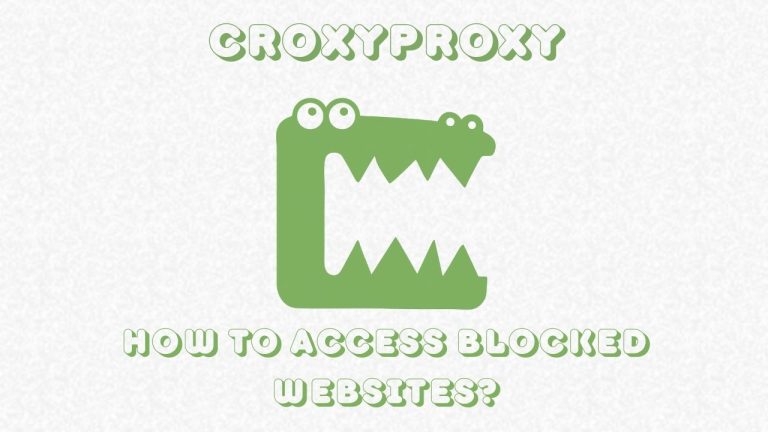How to Start Using Proxy?
How to Start Using Proxy? Whether you want to access blocked websites, improve your browsing security, or hide your IP address, using a proxy server is a simple yet effective solution. This article provides a step-by-step guide on how to start using proxy, including detailed instructions for Chrome users, and tips for optimizing your proxy setup.
What is a Proxy Server?
A proxy server acts as an intermediary between your device and the internet. When you connect through a proxy, your requests are routed through the proxy server before reaching the target website. This process helps you:
- Hide your IP address to maintain anonymity online
- Access blocked or restricted websites in your country
- Improve security by filtering malicious websites
- Control internet usage in organizations or households
In simple words, a proxy server is like a gateway that protects and manages your internet connection while giving you the freedom to browse safely.
Benefits of Using a Proxy
Using a proxy server offers multiple advantages. Here are the main benefits:
| Benefit | Description |
|---|---|
| Anonymity | Your real IP address is hidden, making it difficult for websites to track you. |
| Access to Restricted Content | Unblock websites, streaming platforms, and social media restricted in your region. |
| Enhanced Security | Protects against hackers and malicious websites by acting as a barrier. |
| Faster Browsing | Some proxies cache web pages, reducing loading times for frequently visited websites. |
| Control & Monitoring | Ideal for organizations to monitor employee internet usage. |
By understanding these benefits, you can see why learning how to use proxy is essential in today’s internet-driven world.
How to Start Using Proxy in Chrome
For beginners, setting up a proxy server in Google Chrome is simple. Follow these steps carefully:
Step 1: Open Chrome Settings
Open your Chrome browser and click the three-dot menu located at the top right corner. From the dropdown menu, select Settings.
Step 2: Access Proxy Settings
Scroll down and click System. Then, choose Open your computer’s proxy settings. This action will redirect you to your operating system’s proxy setup interface.
Step 3: Enable Manual Proxy Setup
Once in the proxy settings window, look for Manual proxy setup and turn it on.
Step 4: Enter Proxy Details
Enter the Proxy Server IP Address and Port Number provided by your proxy service provider. Be careful to input the correct details to ensure proper connection.
Step 5: Save Changes
Click Save to apply the changes. Restart your browser to ensure the proxy is active and functioning.
Types of Proxy Servers
There are different types of proxy servers, each serving a unique purpose. Understanding them will help you choose the right one for your needs.
| Type | Description | Best For |
|---|---|---|
| HTTP Proxy | Handles web traffic only, mostly used for browsing websites. | Regular web surfing |
| HTTPS Proxy (SSL Proxy) | Encrypts your connection for secure browsing. | Online banking, private browsing |
| SOCKS Proxy | Handles various types of traffic, including emails and torrents. | Advanced users, P2P sharing |
| Transparent Proxy | Doesn’t hide your IP but can filter content. | Schools, organizations |
| Anonymous Proxy | Hides your IP but shows you are using a proxy. | Privacy-conscious users |
| High Anonymity Proxy | Completely hides your IP and proxy usage. | Maximum privacy & security |
Knowing the type of proxy you are using is critical for both security and performance optimization.
How to Find a Reliable Proxy Server
To get the most out of your proxy experience, selecting a reliable proxy server is essential. Consider these factors:
- Speed: Look for a proxy with minimal latency to ensure smooth browsing.
- Location: Choose a server located near your target website for faster access.
- Security: Ensure the proxy offers SSL encryption to protect your data.
- Compatibility: Verify it works with your browser and operating system.
- Price: Free proxies are available, but paid options usually provide better reliability and speed.
Using Proxy for Streaming and Accessing Blocked Content
One of the main reasons users opt for proxies is to access geo-restricted content. For example, streaming platforms like Netflix, Hulu, or Spotify may not be available in all countries. By connecting to a proxy server in a supported region, you can enjoy unlimited content without restrictions.
Tips for Streaming with Proxy:
- Choose a high-speed proxy to avoid buffering.
- Use HTTPS proxies for encrypted connections.
- Test different locations if the content remains inaccessible.
Proxy vs VPN: What’s the Difference?
Although proxies and VPNs share some similarities, they are not the same. Here’s a clear comparison:
| Feature | Proxy | VPN |
|---|---|---|
| IP Masking | Yes | Yes |
| Encryption | Limited (HTTPS only) | Full device encryption |
| Speed | Generally faster | Slightly slower due to encryption |
| Cost | Free or low-cost | Usually paid |
| Scope | Browser-specific | Entire device |
Proxies are ideal for casual browsing, while VPNs provide comprehensive privacy and security for all online activities.
Common Problems and Solutions While Using Proxy
Sometimes, users may encounter issues while using a proxy. Here are common problems and their fixes:
- Connection Fails
- Ensure the IP address and port number are correctly entered.
- Try using a different proxy server.
- Slow Browsing Speed
- Switch to a proxy server closer to your location.
- Choose a server with higher bandwidth.
- Access Denied
- Some websites block known proxy IPs.
- Use a high anonymity proxy to bypass restrictions.
- Compatibility Issues
- Confirm the proxy type matches your browser or application requirements.
By following these solutions, you can enjoy uninterrupted proxy services without frustration.
Security Tips While Using Proxy
Even though proxies provide some level of anonymity, online security is not guaranteed. Follow these tips to stay safe:
- Use trusted proxy providers only.
- Prefer HTTPS or SOCKS5 proxies for encryption.
- Avoid free proxies for sensitive transactions.
- Regularly update your browser and system.
- Combine proxy usage with antivirus and firewall protection.
How to Use Proxy on Other Devices
Besides Chrome, you can set up a proxy on different devices and applications:
| Device / Platform | How to Set Proxy |
|---|---|
| Windows 10 | Settings > Network & Internet > Proxy > Manual setup |
| MacOS | System Preferences > Network > Advanced > Proxies |
| Android | Wi-Fi Settings > Modify Network > Advanced Options > Proxy |
| iOS | Settings > Wi-Fi > Configure Proxy > Manual |
| Firefox Browser | Options > General > Network Settings > Manual Proxy Configuration |
Setting up proxies across devices ensures secure browsing everywhere.
Proxy Best Practices
To make the most out of your proxy server, follow these best practices:
- Regularly change your proxy IP to avoid detection.
- Use dedicated proxies for sensitive tasks.
- Combine proxy with VPN for maximum security.
- Test your proxy speed using online tools before heavy usage.
- Keep a backup proxy list to prevent downtime.
Conclusion
Starting to use a proxy server is an effective way to protect your online privacy, access blocked content, and improve browsing performance. By following the step-by-step instructions, selecting the right type of proxy, and adhering to security tips, anyone can browse the internet safely and freely. Remember, choosing a reliable proxy provider and configuring it correctly is key to a seamless online experience.







